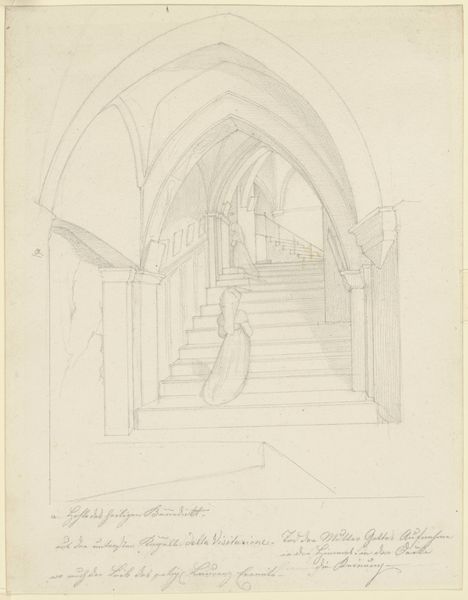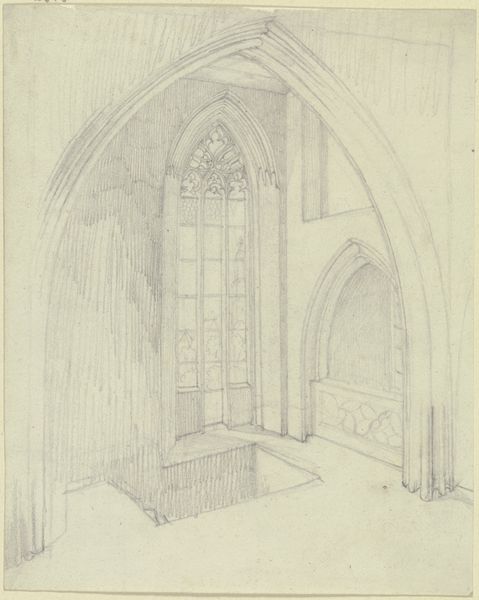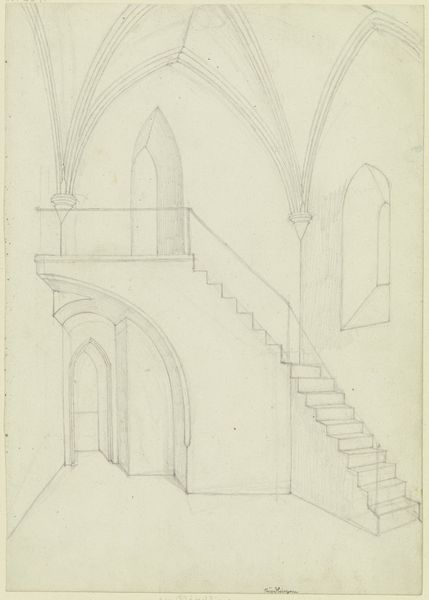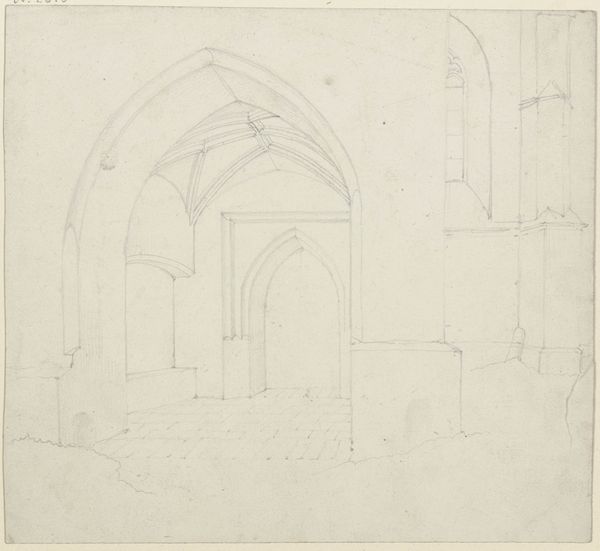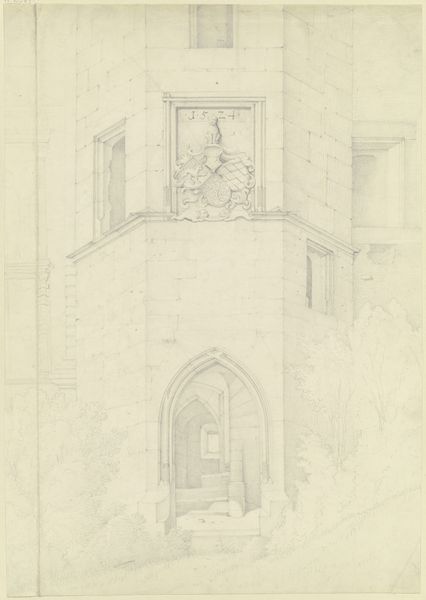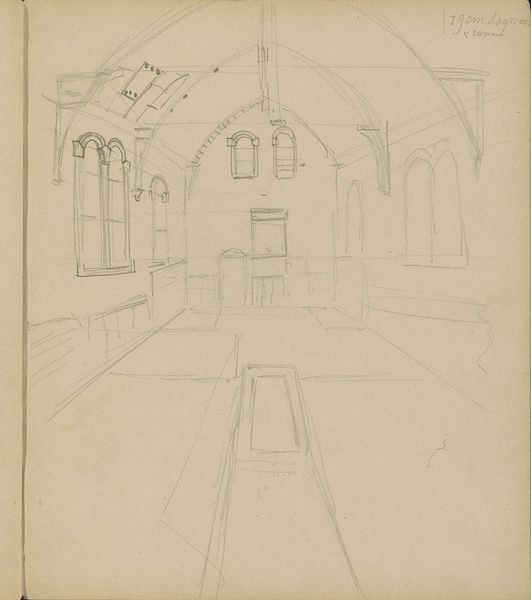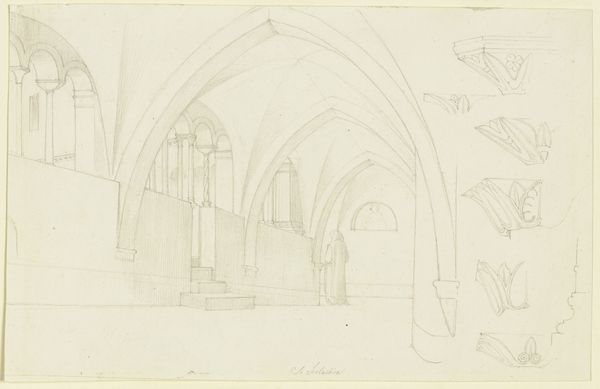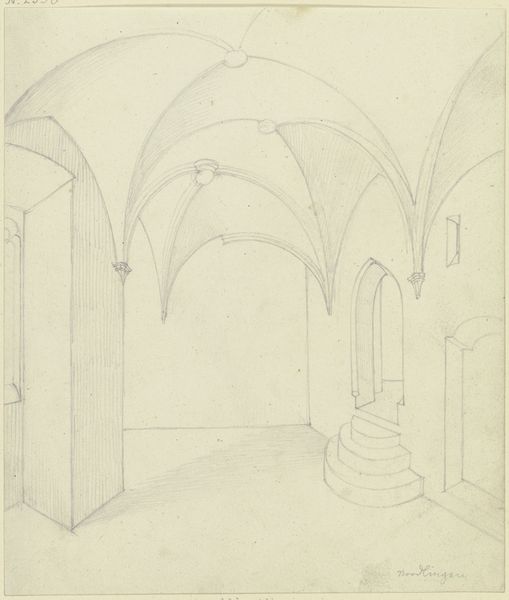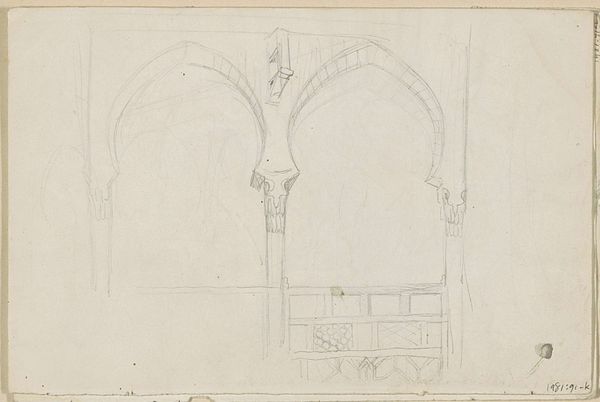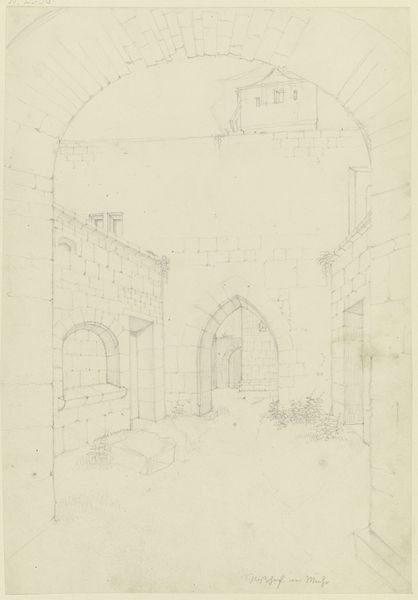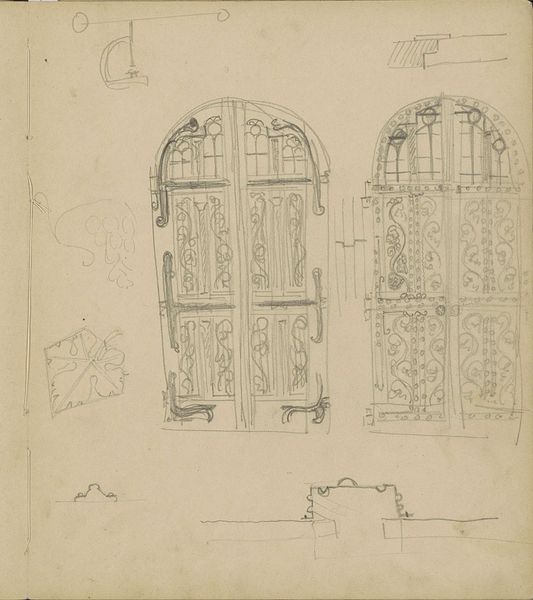
drawing, paper, dry-media, pencil, architecture
#
drawing
#
16_19th-century
#
medieval
#
landscape
#
paper
#
dry-media
#
geometric
#
pencil
#
architecture
Copyright: Public Domain
Curator: At the Städel Museum, we have before us "Sakristei zu Neckarsteinach" by Karl Ballenberger. It's a pencil drawing on paper, a study of a church interior. Editor: It's very faint, almost ghostly. The perspective draws you in, but it feels unfinished, like a memory fading at the edges. I'm immediately struck by how empty it is, a captured moment without human presence. Curator: Indeed, this work demonstrates Ballenberger’s interest in medieval architecture. The precise rendering of the Gothic window and vaulted ceiling points to a fascination with the craftsmanship and geometry inherent in these sacred spaces. We might also consider his labor and choice of dry media given architecture became closely related to industrial and nationalistic pursuits in the 19th century. Editor: Yes, the architecture dominates, but consider how the light plays within the structure. Notice the shadows defining the planes, lending volume to the flat surface of the paper. Also, the repetition of vertical lines and arched forms creates a compelling visual rhythm that guides the eye. Curator: From a materialist perspective, consider what the production of drawings like this meant in the 19th century. Artists became draftsmen. There was work to be done to document and claim Germany’s “glorious” past through art and architecture. Also, let's look at who consumes this art form—what does it mean for Germany? Editor: While your argument for the social context of this study is spot-on, I find the stark contrast of sharp architectural lines and soft pencil strokes creating a certain harmony here especially beautiful. Also the very limited value range creates a sense of quiet solemnity in the sacristy that could suggest various interpretations of religiosity and history. Curator: In thinking about the religious space captured by Ballenberger’s, one cannot help but think of the means through which these institutions obtained their wealth. Editor: Agreed. Thinking structurally gives an insight to the material impact art production has. I never truly saw this drawing beyond its forms, and you allowed it to mean so much more. Curator: And seeing it isolated from context made it a different, interesting experience for me. Thank you!
Comments
No comments
Be the first to comment and join the conversation on the ultimate creative platform.
